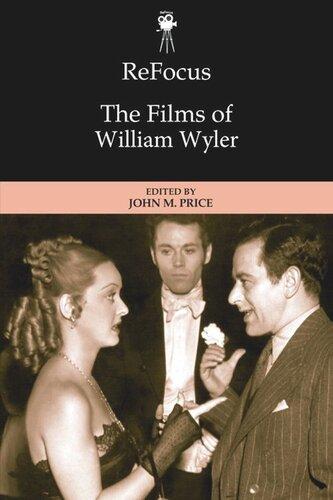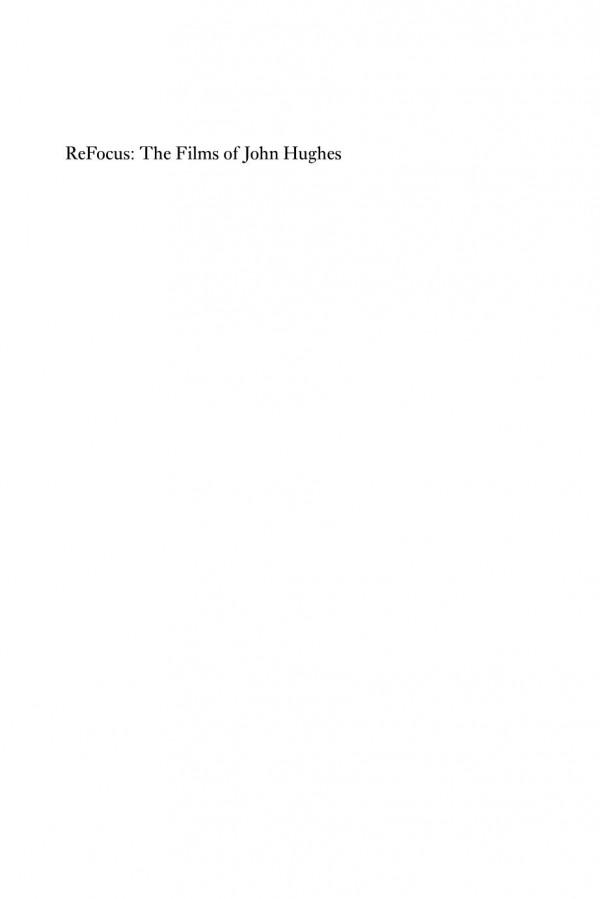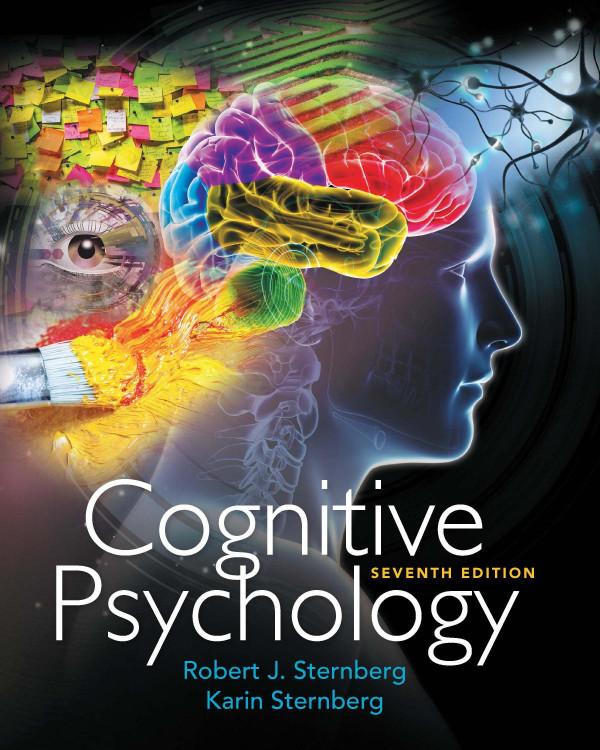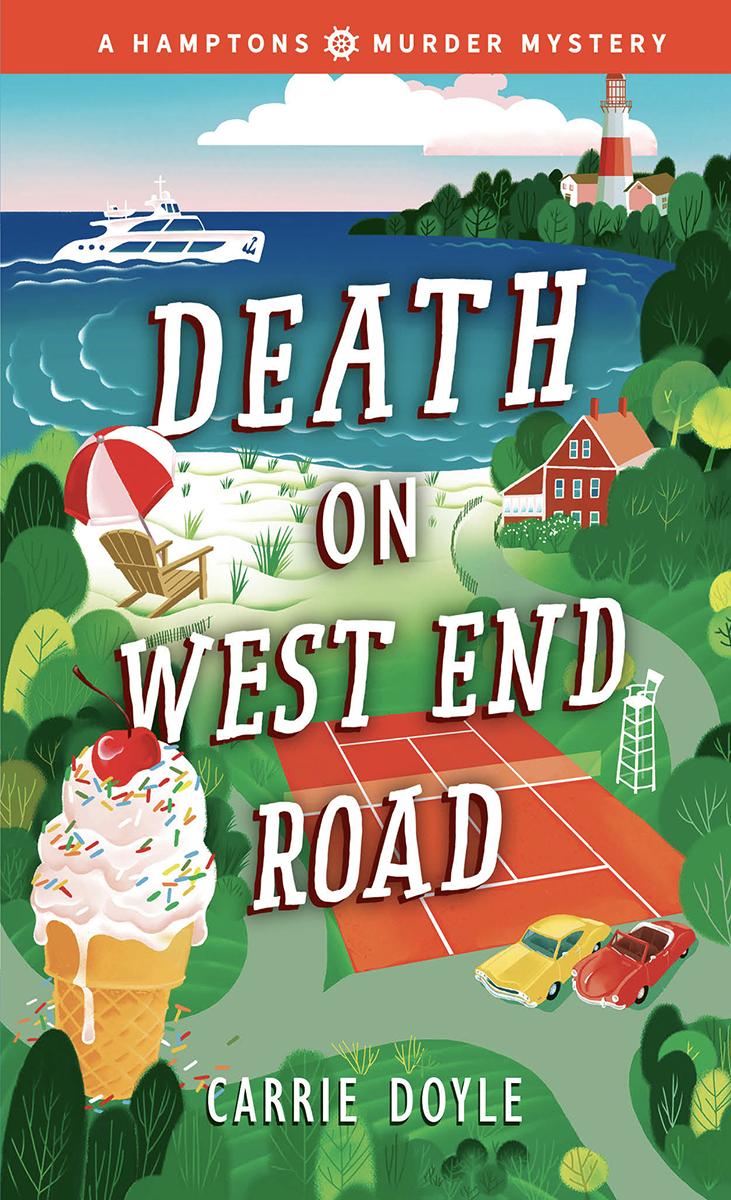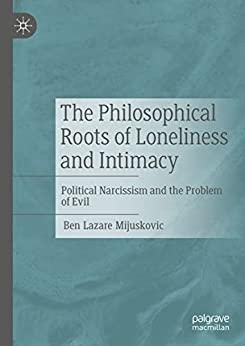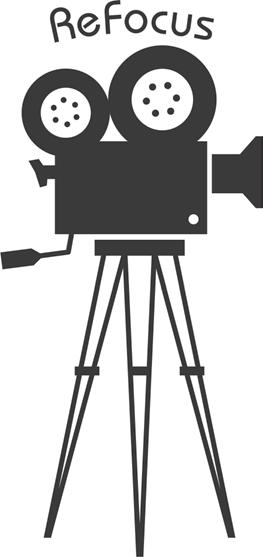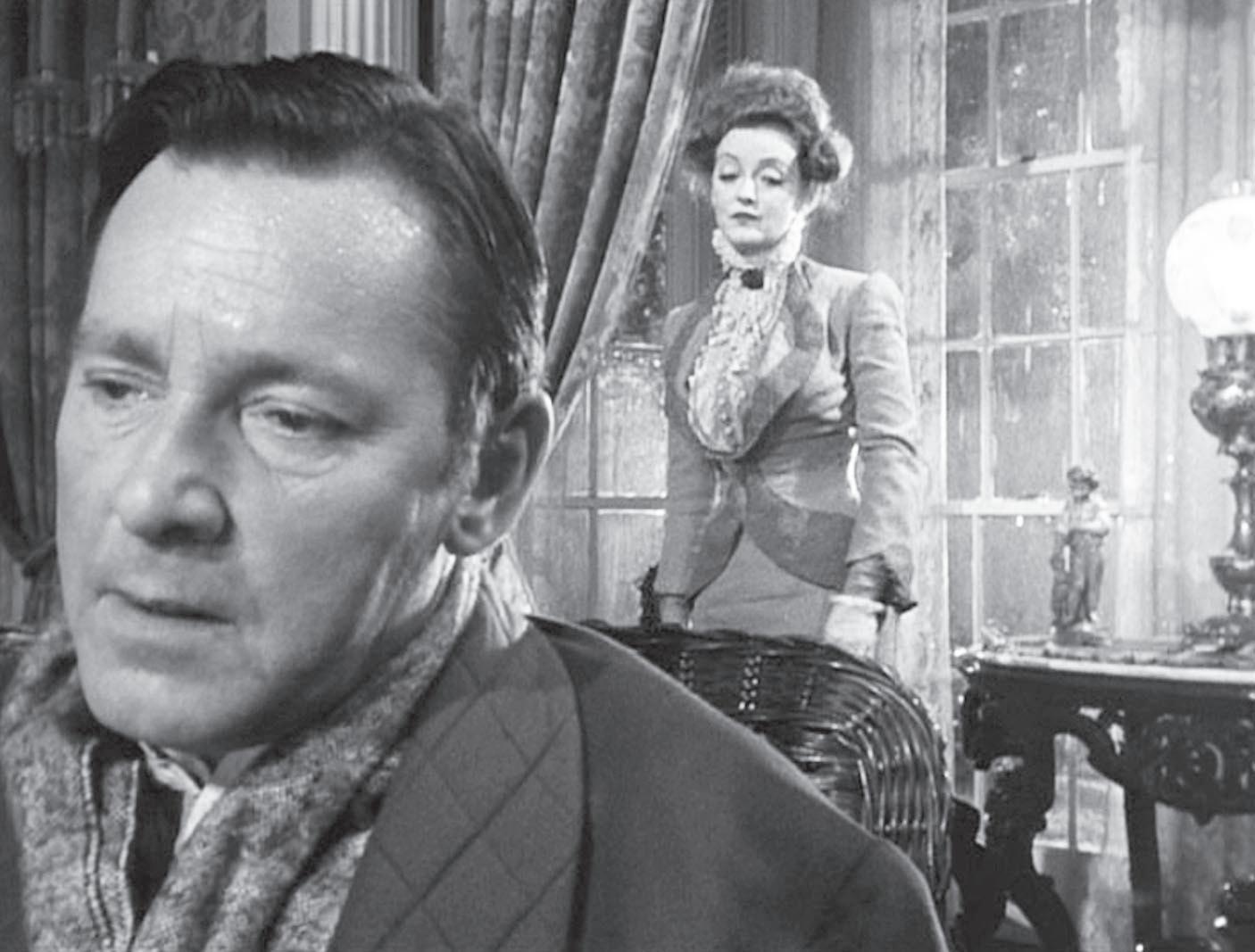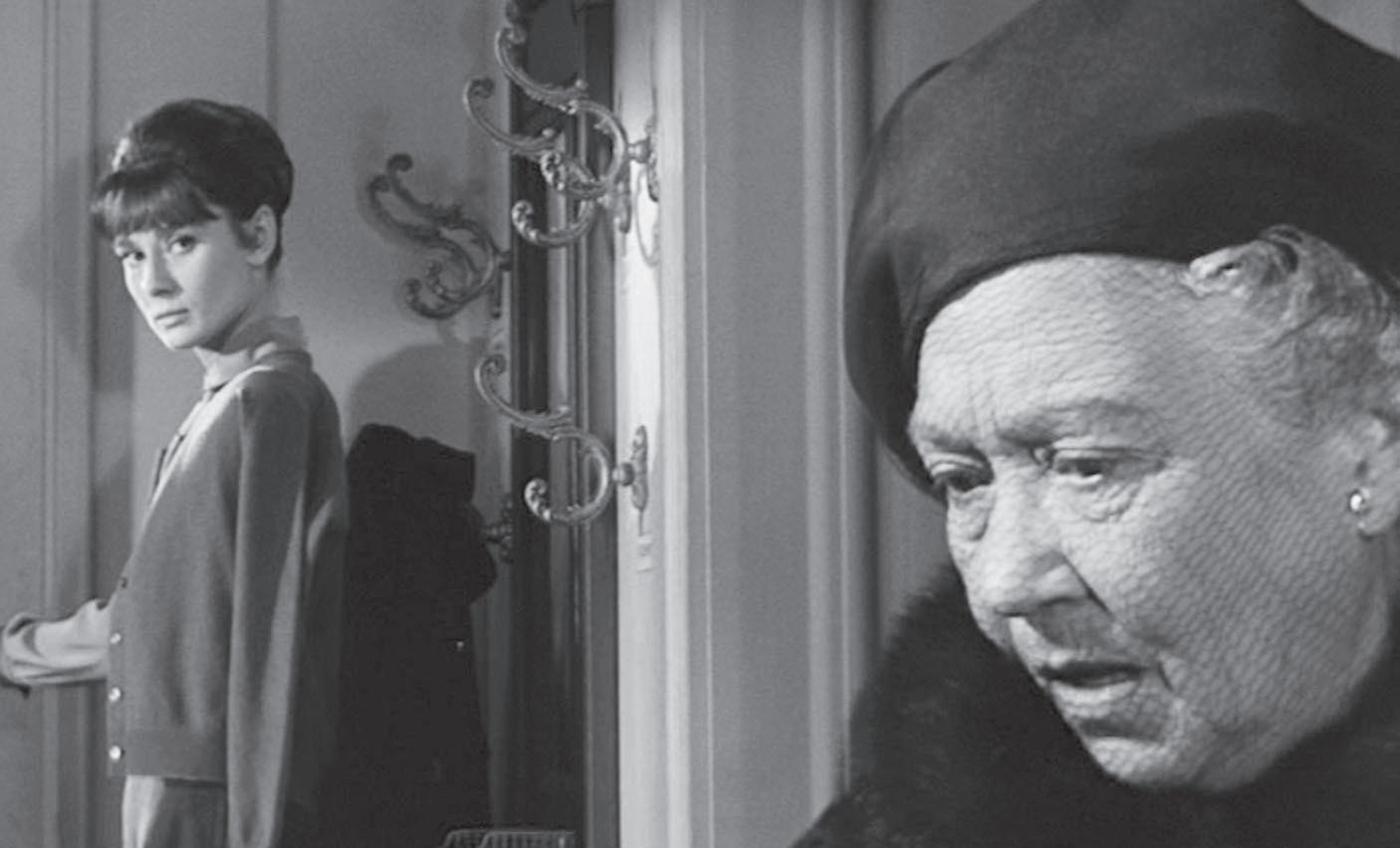https://ebookmass.com/product/refocus-the-films-of-william-
Instant digital products (PDF, ePub, MOBI) ready for you
Download now and discover formats that fit your needs...
ReFocus: The Films of John Hughes Timothy Shary
https://ebookmass.com/product/refocus-the-films-of-john-hughestimothy-shary/
ebookmass.com
The Fiscal Theory of the Price Level John Cochrane
https://ebookmass.com/product/the-fiscal-theory-of-the-price-leveljohn-cochrane/
ebookmass.com
The Fiscal Theory of the Price Level John H. Cochrane
https://ebookmass.com/product/the-fiscal-theory-of-the-price-leveljohn-h-cochrane/
ebookmass.com
Cognitive Psychology, 7th Ed 7th Edition Robert J. Sternberg
https://ebookmass.com/product/cognitive-psychology-7th-ed-7th-editionrobert-j-sternberg/
ebookmass.com
Death on West End Road (Hamptons Murder Mystery 3) Carrie Doyle
https://ebookmass.com/product/death-on-west-end-road-hamptons-murdermystery-3-carrie-doyle/
ebookmass.com
On the nonexistence of elements of Kervaire invariant one Michael Anthony Hill
https://ebookmass.com/product/on-the-nonexistence-of-elements-ofkervaire-invariant-one-michael-anthony-hill/
ebookmass.com
One Bold Move a Day 1st Edition Shanna A. Hocking
https://ebookmass.com/product/one-bold-move-a-day-1st-edition-shannaa-hocking/
ebookmass.com
The Philosophical Roots of Loneliness and Intimacy: Political Narcissism and the Problem of Evil 1st ed. 2022 Edition Mijuskovic
https://ebookmass.com/product/the-philosophical-roots-of-lonelinessand-intimacy-political-narcissism-and-the-problem-of-evil-1sted-2022-edition-mijuskovic/ ebookmass.com
A Better Metro Manila?: Towards Responsible Local Governance, Decentralization and Equitable Development 1st Edition Teresa S. Encarnacion Tadem
https://ebookmass.com/product/a-better-metro-manila-towardsresponsible-local-governance-decentralization-and-equitabledevelopment-1st-edition-teresa-s-encarnacion-tadem/ ebookmass.com
Electroanalytical Applications of Quantum Dot-Based Biosensors (Micro and Nano Technologies) 1st Edition Bengi Uslu (Editor)
https://ebookmass.com/product/electroanalytical-applications-ofquantum-dot-based-biosensors-micro-and-nano-technologies-1st-editionbengi-uslu-editor/ ebookmass.com
ReFocus: The Films of William Wyler
ReFocus: The American Directors Series
Series Editors: Robert Singer, Frances Smith, and Gary D. Rhodes
Editorial board: Kelly Basilio, Donna Campbell, Claire Perkins, Christopher Sharrett, and Yannis Tzioumakis
ReFocus is a series of contemporary methodological and theoretical approaches to the interdisciplinary analyses and interpretations of neglected American directors, from the once-famous to the ignored, in direct relationship to American culture—its myths, values, and historical precepts.
Titles in the series include:
Preston Sturges Edited by Jeff Jaeckle and Sarah Kozloff
Delmer Daves Edited by Matthew Carter and Andrew Nelson
Amy Heckerling Edited by Frances Smith and Timothy Shary
Budd Boetticher Edited by Gary D. Rhodes and Robert Singer
Kelly Reichardt E. Dawn Hall
William Castle Edited by Murray Leeder
Barbara Kopple Edited by Jeff Jaeckle and Susan Ryan
Elaine May Edited by Alexandra Heller-Nicholas and Dean Brandum
Spike Jonze Edited by Kim Wilkins and Wyatt Moss-Wellington
Paul Schrader Edited by Michelle E. Moore and Brian Brems
John Hughes Edited by Timothy Shary and Frances Smith
Doris Wishman Edited by Alicia Kozma and Finley Freibert
Albert Brooks Edited by Christian B. Long
William Friedkin Steve Choe
Robert Altman Edited by Lisa Dombrowski and Justin Wyatt
Mary Harron Edited by Kyle Barrett
Wallace Fox Edited by Gary D. Rhodes and Joanna Hearne
Richard Linklater Edited by Kim Wilkins and Timotheus Vermeulen
Roberta Findlay Edited by Peter Alilunas and Whitney Strub
Richard Brooks Edited by R. Barton Palmer and Homer B. Pettey
William Wyler Edited by John M. Price
edinburghuniversitypress.com/series/refoc
The Films of William Wyler
Edited by John M. Price
Edinburgh University Press is one of the leading university presses in the UK. We publish academic books and journals in our selected subject areas across the humanities and social sciences, combining cutting-edge scholarship with high editorial and production values to produce academic works of lasting importance. For more information visit our website: edinburghuniversitypress.com
© editorial matter and organization John M. Price, 2023 © the chapters their several authors, 2023
Edinburgh University Press Ltd
The Tun—Holyrood Road 12 (2f) Jackson’s Entry Edinburgh EH8 8PJ
Typeset in 11/13 Ehrhardt MT by IDSUK (DataConnection) Ltd, and printed and bound in Great Britain
A CIP record for this book is available from the British Library
ISBN 978 1 3995 1046 2 (hardback)
ISBN 978 1 3995 1048 6 (webready PDF)
ISBN 978 1 3995 1049 3 (epub)
The right of John M. Price to be identified as editor of this work has been asserted in accordance with the Copyright, Designs and Patent Act 1988, and the Copyright and Related Rights Regulations 2003 (SI No. 2498).
7
Wyler’s Wuthering Heights (1939): Genre, Transnationalism, and the Adaptation of the Victorian Novel 143
Gabrielle Stecher
Part III Gender and Sexuality
8 William Wyler’s The Heiress (1949) and the Unknown Woman 161
Agustin Zarzosa
9 These Three: Wyler and his Two Adaptations of The Children’s Hour 176
Matthias Smith
Part IV War and Peace
10 A War of the People: Destruction, Community, and Hope in William Wyler’s Wartime Films 191
Robert Ribera
11 Turning the Other Cheek: Wyler’s Pacifism Trilogy—Friendly Persuasion (1956), The Big Country (1958), and Ben-Hur (1959) 208
John M. Price
Part V Global Wyler
12 William Wyler’s Voyage to Italy: Roman Holiday (1953), Progressive Hollywood, and the Cold War 227
Anthony Smith
13 “Down Eros, Up Mars!”: Post-Colonialism, Imperial Violence, and the Corrupting Influence of Hate in William Wyler’s Ben-Hur (1959) 244
Kaitlin Pontzer
14 “Life Isn’t Always What One Likes”: The Unbearable Lightness of Royalty, and Other Stereotypes in Roman Holiday (1953) 258
Etienne Boumans
1.10 Staging-in-depth without deep focus, both characters in frame but the emotion of only one is important (The Love Trap, 1929) 37
1.11 Staging-in-depth and frame within a frame (Hell’s Heroes, 1929) 39
1 12 Use of stairs (These Three, 1936) 41
1.13 Use of stairs (The Heiress, 1949) 41
1.14 Use of stairs (Ben-Hur, 1959) 42
1.15 The dynamic and confined nature of office activity displayed by the crossing movement of characters (Counsellor at Law, 1933) 43
1 16 Spatial dimension created by movement toward and away from camera and past other characters (Counsellor at Law, 1933) 44
1.17.1 The hectic nature of office activity demonstrated by movement in and out of doors (Counsellor at Law, 1933) 45
1.17.2 The hectic nature of office activity demonstrated by movement in and out of doors (Counsellor at Law, 1933) 45
1.18 Creating deep spatial reality without deep focus (Counsellor at Law, 1933) 46–7
1.19 Use of proto-film noir lighting to express character’s dark emotions (Counsellor at Law, 1933) 48
1 20 Use of staging and lighting to express characters’ emotional separation (Counsellor at Law, 1933)
1.21 The mirror limbo from Citizen Kane (1941) antedates . . .
1.22 . . . Wyler’s use of the same effect in The Good Fairy (1935)
1.23 Staging-in-depth for humorous effect (The Good Fairy, 1935) 51
3 1 Character relations expose a postwar social reality premised in hierarchies of class, gender, and race difference (The Best Years of Our Lives, 1946) 75
3.2 Wyler maintains a relation between interiors and exteriors (The Best Years of Our Lives, 1946) 76
3 3 Viewers see the protagonists as well as what the protagonists see, simultaneously (The Best Years of Our Lives, 1946) 76
3 4 Wyler composes in depth, splitting viewer attention (The Best Years of Our Lives, 1946) 78
3.5 Wyler invites viewers to construct meaning from character relations, blocked and staged in deep space (The Best Years of Our Lives, 1946) 79
3 6 Acting style and lighting contributes to the creation of an expressionist reality, or inwardness, outwardly expressed (The Best Years of Our Lives, 1946) 83
3.7 Wyler uses style to achieve a verisimilar appearance of inner subjective reality (The Best Years of Our Lives, 1946) 84
4 1 The loneliness between the end of one life and the beginning of another (Dodsworth, 1936) 91
4.2 The ominous nature of an extremely low angle (Dead End, 1937) 91
Notes on Contributors
Kyle Barrowman has a Ph.D. from the Cardiff University School of Journalism, Media, and Culture, an M.A. from the University of Chicago in Cinema and Media Studies, and a B.A. from Columbia College in Film & Video. Dr. Barrowman has taught World Cinema, and Film and Cultural Theory at Cardiff University, Cinema Analysis and Criticism at Columbia College, and History of Cinema at DePaul University. He has been published in Mise-en-scène: The Journal of Film & Visual Narration 5 2 (2020), Media Res (2020), The Journal of Ayn Rand Studies 18.2 (2018), and Offscreen 22.7 (2018).
Etienne Boumans is an independent scholar, researching popular culture and the arts and their relationship to human rights, and is the chair of the evaluation committee on the Arts Flemish Parliament Act, as well as the former head of the European Parliament’s committee secretariat on culture and education (2004–7). Boumans has published on European policies, human rights, film history and cultural heritage issues in Limina: A Journal of Historical and Cultural Studies 25.1 (2020), The Quint: An Interdisciplinary Quarterly from the North, 12.2 (2020), The Apollonian – A Journal of Interdisciplinary Studies 5 (2018), and was a contributing author to The Encyclopedia of Racism in American Films (2018).
Carol Donelan received her Ph.D. from the University of MassachusettsAmherst in Comparative Literature (Film Studies), and her M.A. is in Film Studies and Comparative Literature from the University of Iowa. She has taught in the Department of Cinema & Media Studies at Carleton College since 1999. She has been published in A Critical Companion to Stanley Kubrick (2020), A Critical Companion to James Cameron (2019), Film Criticism 42.1 (2018), and Quarterly Review of Film & Video 35.1 (2018).
Milan Hain is an Assistant Professor and Area Head of Film Studies at the Department of Theater and Film Studies at Palacký University in Olomouc, Czech Republic. A former Fulbright visiting researcher at University of California, Santa Barbara, Dr. Hain is the author of Hugo Haas a jeho (americké) filmy [Hugo Haas and His (American) Films] and editor and co-author of three other books on cinema. His most recent articles have been published by Jewish Film and New Media 7 1 (2019) and Journal of Adaptation in Film and Performance 13.3 (2020).
Terrance H. McDonald has a Ph.D. from Brock University (St. Catherines), with a dissertation entitled “Mediated Masculinities: The Forms of Masculinity in American Genre Film.” Dr. McDonald has taught Cinema Studies at the University of Toronto Mississauga and he has been published in Men and Masculinities , 21 . 1 ( 2018 ), and From Deleuze to Posthumanism: Philosophies of Immanence ( 2022 ) Dr. McDonald also currently has a chapter accepted by Edinburgh University Press for inclusion in Refocus: The Films of Denis Villeneuve
Francis Mickus works at the Musée d’Orsay in Paris and is a current Doctoral Candidate in History at the University of Paris 1 , Pantheon-Sorbonne. Mickus holds a Masters in Art History from the Sorbonne’s Institut National d’Histoire de l’Art (University of Paris IV) and a Maîtrise in Modern Letters from the Sorbonne Nouvelle (University Paris III). Mickus has written on American filmmakers such as Capra, Hitchcock, Welles, and Zemeckis, as well as on King Henry V and the relationship between history and images. He has been published in The Quint 13.2 (2021), A Critical Companion to Robert Zemeckis (2020), and La revue du Cinéma 4 (2006). Mickus affords this collection an integral international frame of reference toward an American filmmaker. Unlike the contributors who approach Wyler from a strictly cinematic expertise, Mickus brings great credentials in Art History and therefore a unique frame of reference on Wyler’s visual style.
Kaitlin Pontzer received her Ph.D. from Cornell University in 2021 . Before pursuing doctoral studies at Cornell, she studied the history of early modern England at Loyola University Chicago and Humanistic Studies at Saint Mary’s College, Notre Dame. Dr. Pontzer works on political culture in early modern England and the British Empire. Her research interests include partisan politics, rhetoric, empire, history of emotions, and gender. She was a contributing writer for Synapsis, A Health Humanities Journal and has taught courses on the early modern death penalty at Cornell University. Her academic background in European History brings a unique perspective to Film Studies.
John M. Price has both a professional and an academic background in Film and Literature. He has a Ph.D. in Film and Literature from Northern Illinois University and a B.A. in English and Communications from the University of Notre Dame. Dr. Price has taught English at both Northern Illinois University and the University of Wisconsin-Eau Claire. He also has over twenty years of professional film and television production experience as a producer, director, scriptwriter, and lighting director. He has been published in The Performativity of Villainy and Evil in Anglophone Literature and Media (2021), Literature/Film Quarterly, 47:1 (2019), Critical Insights: Alfred Hitchcock (2017), Jonathan Swift and Philosophy (2017), and Poli-Femo: Letteratura e Arti (2016).
Robert Ribera received his Ph.D. from Boston University, focusing on Film Studies, Twentieth Century American History, and Twentieth Century American Art History. Dr. Ribera teaches Race & Class in Contemporary American Film, Animation History, Contemporary Female Directors, Film History, Documentary Film Production, Documentary History, The Cinema of Walt Disney, Contemporary and Classical Film Theory, Film Analysis, Advanced Film Analysis, Narrative Film Production, and Documentary Film of the 60 s and 70s at Portland State University. He is the editor of Martin Scorsese: Interviews (Revised and Updated) ( 2017 ) and has a chapter in ReFocus: The Films of Paul Schrader (2020 ).
Anthony Smith received his Ph.D. from the University of Minnesota in American Studies and a B.A. from Boston College. He has been an Associate Professor at the University of Dayton since 2010. Dr. Smith has been published in Roman Catholicism in America: A Thematic History (2019), Rivista luci e ombre, 3 4 (2016), and Catholics in the Movies (2008).
Matthias Smith currently works at the Eye Filmmuseum in Amsterdam. He has also worked at the UCLA Rare Book School and performed film restoration for Columbus State University. He has taught Introduction to World Cinema, the Woman’s Film genre, and Queer Cinema at the University of North Carolina, from which he received his master’s in Art in Film Studies. Smith has also studied Film and Art History at the University of Oxford and spoken at the 2018 Stars and Screen Conference at Rowan University. His current research project concerns the surprisingly ahead-of-its-time Anna und Elizabeth (German, 1933), a lesbian drama, which has immersed Smith in several European film archives. Smith’s academic interest include preStonewall queer cinema, Golden Age Hollywood, and the Women’s Film genre.
Gabrielle Stecher’s areas of academic expertise are eighteenth- and nineteenthcentury British literature and visual culture, museum studies, feminist literary
criticism and art historiography, history, theory of the novel, and Victorian literature on film. She has presented at the American Society for Eighteenth-Century Literature, the Dickens’ Universe Conference, and the British Women Writers Conference. Her current manuscript in progress is Vanity Fair on Film. Stecher received her Ph.D. in English in 2022 from the University of Georgia, and is now part of the faculty at Indiana University Bloomington. Stecher’s expertise is essential to this collection as a chapter dealing specifically with Wyler’s skills in adapting literature to the screen.
Agustin Zarzosa has a Ph.D. from the University of California, Los Angeles, Department of Film, Television and Digital Media, an M.A. from New York University in Cinema Studies, and is currently an Associate Professor and the Chair of Cinema Studies, School of Film and Media Studies at Purchase College. Dr. Zarzosa is the author of Refiguring Melodrama in Film and Television: Captive Affects, Elastic Sufferings, Vicarious Objects (2012), and he has also been published in Cinema: Journal of Philosophy and the Moving Image 2 (2011), New Review of Film and Television Studies 8 4 (2010), and Colloquy: text theory critique 13 (2007).
Introduction: William Wyler— Chariot Races and Flower Shows
John M. Price
He was an ace professional, a perfectionist. Were he alive in full spade today, we’d have rather better films than we actually have now.1
Every aspect of his films, he took great care over, probably at the expense of promoting his own name. It’s extraordinary that his films are so famous, and so celebrated, more so than William Wyler, the name.2
Abroadrange of experience and the skills to handle diverse situations is usually thought to be an asset. However, it seems that William Wyler’s mastery of a wide variety of film genres is precisely what caused him to be devalued by many film scholars. Indeed, the current status of and the problem with Wyler is summed up by Jan Herman, “Today, despite his extraordinary accomplishments, Wyler is hidden from view.”3 A similar assessment would lead columnist David B. Green, in 2015, to christen Wyler, “the most famous director you never heard of.”4 Wyler often proclaimed his desire to attempt every type of film. When asked why he accepted the project of the 1959 version of Ben-Hur, he replied: “I said it would be intriguing to see if I could make a Cecil B. DeMille picture.”5 The venue was not important to Wyler. The challenge for him was to tell a story in the clearest and most understandable way for the audience, regardless of the material. This diversity, however, worked against recognition as an auteur, for when he did agree to helm Ben-Hur, the auteurists declared it a blatantly crass attempt at simply making money.6 Wyler did nothing to assuage them; he stated quite openly, “I thought this picture gonna make a lots of money, and maybe I’ll get some of it.”7 A more serious reason for Wyler shepherding this project was given by producer Sam Zimbalist who “wanted Wyler to give . . the picture what it needed—body, depth, intimacy—the sophisticated treatment for which
Wyler’s work was prized.”8 So, despite those who may see Wyler as only a gifted craftsman and not a true artist, Zimbalist’s desire for Wyler’s hand was the recognition of the director’s most valued skill—breathing life into characters and examining the complexities of human relationships.
In terms of Wyler’s diversity, André Bazin admits that “there is no consistent motif in the work of Wyler.” 9 However, Bazin does not see this as a stumbling block to Wyler appreciation: “I do not think that it is more difficult to recognize the signature of Wyler in just a few shots than it is to recognize the signatures of Ford, Fritz Lang, or Hitchcock.”10 Undoubtedly, Wyler detractors will point out that, unlike the cinematic auteurs previously mentioned, Wyler did not focus upon a certain theme and explore it over and over to examine all its possibilities (e.g. suspense and Hitchcock). Bazin sees the Wyler signature as something different than specific genres in specific settings exploring specific themes. “There is an evident fondness,” Bazin says of Wyler, “for psychological scenarios set against social backgrounds . . . his work as a whole leaves us with the piercing and rigorous impression of a psychological analysis.”11 Wyler’s talents as a filmmaker fall into three distinct capabilities: the ability to adapt material from the stage or literature to the screen and do so with cinematic vitality, the use of camera movement and staging-in-depth to create a type of screen “realism,” and last, but perhaps most important, the gift of collaboration. Such collaborations were often contentious, but these amalgams generated some of the most awarded films of all time. Further analysis reveals that Wyler’s collaborations also have three distinct strains: with producers, namely Samuel Goldwyn; with technological artists, like Gregg Toland; and with a wide range of performers.
Wyler felt that the genre should dictate the style. Therefore, in Wyler’s opinion, a style of direction must be malleable in the face of each specific film.12 The result is that those who have denied Wyler status among an elevated echelon of filmmakers have described his style as “styleless.” If such an epithet is meant to suggest that Wyler’s style is not intrusive, then Wyler would agree:
The camera is a marvelous instrument [but] you have to use it with discipline . . . A director should not try to attract attention to himself [and] away from the actors and away from the story. He should attract attention to himself by making great films, great performances . . Don’t detract from the story or the actors. That’s what the people have come to see. They did not come to see what you can do with a camera.13
This declaration should not be seen, however, as just Wyler’s cinematic ethos. It is, in fact, the very definition of classic Hollywood’s so-called “invisible style.” This artistic propensity for self-effacement is of course a misnomer. Any film technique is only “invisible” by comparison with other techniques and by the
smoothness of its execution. A camera movement may be less intrusive than a violent edit point, but both are highly manipulative. While Wyler’s style emphasizes mise en scène over montage, the former and the latter are both constructs. The classic Hollywood style is not “invisible” nor is Wyler’s style “styleless.” Due to his beginnings in action-packed Westerns, Wyler developed early on a fondness for moving the camera, but this proclivity would also become wedded to an affinity for staging-in-depth and later deep focus. This volume of the ReFocus series intends to explore the many facets of the Wyler canon which comprise this style. Whatever opinion one holds of the Wyler style, there is no denying that his formula for filmmaking yielded phenomenal success, not only at the box office but also in accumulated awards. Wyler’s three Academy Awards for Best Director14 Mrs. Miniver (1942), The Best Years of Our Lives (1946), and Ben-Hur (1959)—are second only to John Ford’s four wins for director. Wyler was also nominated for Best Director an additional nine times and three times as a producer.15 He was also nominated for Best Director by the Directors Guild of America seven times and winning once for Ben-Hur. 16 Perhaps even more telling than his own awards are the myriad of acting Oscars that Wyler had helped his stars to achieve. No other film director has ever shepherded more actors and actress to Oscar-winning performances than Wyler—thirty-six nominations and fourteen wins, both in leading and supporting roles. Life-long friend, writer–director–actor John Huston17 said that Wyler had “a genius for getting the truth out of an actor.”18 The list of his award-winning performers19 bears witness not only to the wide range of genres that he mastered, but also to a proficiency with woman’s stories and characters’ psychology that few of his contemporaries possessed, and perhaps most significantly a dedication to collaborative craftsmanship and a belief that cinematic technique is there to forefront performance and enhance the story.
Of the all the influences on Wyler’s style, no doubt one of the most formative was his immigrant experience. William Wyler was born Willy Wyler (the William would be added later in America) on July 1, 1902, in the province of Alsace-Lorraine, today part of France but then, and since France’s defeat in the Franco-Prussian War, part of the recently unified Germany. Thus, at the time of Wyler’s birth, his hometown was not known as Mulhouse, but Mülhausen. His mother, Melanie, was German, born in Stuttgart, and his father, Leopold, Swiss, and although his family and their town spoke German, Wyler’s mother insisted that her family all spoke French as well. The family was Jewish and Wyler’s mother, even before the advent of National-Socialism, felt that Germany had a long-standing history of antisemitism. Alsace found itself contested for and changing hands several times early in the First World War and young Willy was a first-hand witness to the ravages of war. Indeed, the Wylers had to take refuge in the cellar several times. Young Wyler was never a strong student, and showed little talent or desire to succeed at the family haberdashery business. Even when he was later sent to work in Paris, his strengths remained hidden and his mother
did not know what to do with him. Fate took a hand, however, in the person of Wyler’s uncle, Carl Laemmle. Laemmle was one of the founding owners of Universal Pictures, and he suggested that the family allow the young William, now eighteen, to immigrate to the United States and work for him in the movies. So Wyler moved to America in 1920 and began a career in the film industry, and after one year in New York with Universal’s publicity office, he moved on to Hollywood, at age nineteen.
As his uncle’s life would attest, Wyler was not unique as an immigrant filmmaker. The influx of European filmmakers had a decided influence on early Hollywood and the classic era. Yet, Wyler’s specific experience may explain at least one thematic continuity in his films. While Wyler certainly valued his new homeland—he became a US citizen in 1928—his films are not full of the overly optimistic Americanism and belief in the individual and community to overcome oppression of big government and big business that characterized the films of another immigrant director, Frank Capra. Wyler’s films were not visually demonstrative like German Expressionism nor concerned with exoticism like Josef von Sternberg. His films were not as dark as Erich von Stroheim nor as cynically humorous as Billy Wilder (a director whose name is often confused with Wyler). The territorial turmoil that Wyler saw, in the First World War, seems to have fostered films that deal with the individual struggling in circumstances that seem beyond their ability to handle. In addition, Wyler’s “fascination with America and things American” but seen through “European sophistication and temperament,” and executed with a visual style which appears at times detached, “suggest[s] the point of view of an interested, sympathetic outsider.”20 For Wyler, his insight into his adopted country bestows a viewpoint very different from a native-born perspective. Gregory Peck would describe Wyler as having European sensibilities but also a hundred percent American.21 Wyler’s characters are almost exclusively Americans, and, while his explorations of the human condition surely have universal application, they are uniquely set in and derived from American society. Even Dodsworth (1936), set largely outside of the United States, views European culture and society through the eyes of an American.
Wyler’s early days in Hollywood, and the very nature of the business at that time, would serve to create the craftsmanship that is at the core of his style. Starting at the lowest level of moviemaking acquainted him with all aspects of production, helping him to develop a variety of skills, and he quickly became a third assistant director and then second assistant director. In fact, in a career harbinger, Wyler served as an assistant on the 1925 silent version of Ben-Hur It was also in 1925, at the age of twenty-three, that Wyler got his first chance to direct. It was a two-reeler, running approximately twenty-four minutes, entitled The Crook Buster and was part of a group of Westerns called the Mustang series. He would go on to direct twenty-one such “shorts” for Universal in this series. Wyler himself would later describe this filmmaking situation as “a
training school for directors . . . even girls . . . or any young fellow who showed he was eager, ambitious, and wanted to get . . . to direct.”22 Wyler would direct one of these Westerns every week, each with a total budget of $2,000. The rate at which Hollywood “cranked out” these two-reelers—hundreds of them each year—as well as their rudimentary narratives, fostered an emphasis on developing techniques that were subservient to and enhancing of the story.
In 1926, six months after The Crook Buster, Wyler graduated to directing his first five-reeler, Lazy Lightning. As a five-reeler, Lazy Lightning is considered Wyler’s first feature-length movie. He would do six of these as part of Universal’s Blue Streak series of Westerns. After the Blue Streak series, Wyler did not wait long to expand his type of movies. His next three projects, all now considered to be lost films, did include two more Westerns, Desert Dust (1927) and Thunder Riders (1928), but the third, Anybody Here Seen Kelly? (1928), was his first non-Western, his first comedy, and his first film with a running length greater than an hour. It was also a film for which he was allowed to shoot largely on location in New York City. This gave the film an almost documentary appearance, and no doubt gave birth to the characterization of “Wyler realism.”
Wyler’s next film, The Shakedown (1929), was a “part-talkie,” in that it was produced in both silent and sound versions. The Shakedown was once considered lost, but was found and restored in 1998. Wyler would then return to comedy with The Love Trap (1929), a film which also straddled the silent and sound eras in that it was silent except for the last few scenes. In the opinion of Michael Anderegg, it is The Love Trap that demonstrates Wyler’s “growing maturity and self-confidence,” as the young director “transition[s] from outdoor adventure to domestic intrigue with remarkable ease.”23 In The Love Trap, Wyler presents us with a female lead character who is more than a match for the male characters, “exposes sexual hypocrisy, [and] takes control of her life.”24 The deft handling of such a strong heroine would prove great practice for his later collaborations with Bette Davis and the development of her screen characters. It would be the advent of sound, however, that would allow Wyler to further develop his style and advance his sense of realism. Hell’s Heroes (1929) was not only Wyler’s first “all-talkie,” but was also Universal’s first all-sound film. The film was shot outdoors on location—clearly an opportunity for Wyler to enhance realism. Furthermore, the story was told through the eyes of the “bad guys,” which made it an unorthodox Western. This was an early and portending example of what would become one of Wyler’s defining characteristics—the ability to take a familiar situation and look at it from a different, and often unique, perspective. As Sunday Times film critic, Stephen Armstrong, would put it, “Wyler would take standard tropes, and give them a subtle twist, to make them unusual.”25
In 1933, Wyler made Counsellor at Law, his first adaptation of a play to the screen, a talent that he would come to perfect throughout his career, and challenge him to find various ways to “open up” a stage presentation.26 Wyler felt
that “opening up” a play too much could destroy the vitality of the original story, but just recording a stage production was not the answer either. Wyler’s solution was to hold a high regard for the source material without the restrictive yardstick of pure textual fidelity. This approach, whether adapting a novel or play, prevented his films from becoming static or monotonous. Anderegg, in praising Wyler’s handling of theatrical material, opined, “that an unmoving camera focused on an actor’s face can be as ‘cinematic’ as a cavalry charge.”27
The entirety of Counsellor at Law takes place, as the title suggests, solely in the offices of a law firm. The cramped shooting space no doubt appealed to Wyler’s love of realism, but also required that he develop more innovative ways to work in camera movement, and to continue to exploit long takes, which allow the actors to perform longer without cuts. Wyler’s masterful control of the rapid-fire dialogue also adds to the film’s verisimilitude. This film was also the first time that Wyler worked with a major Hollywood star, John Barrymore, and the accompanying ego. Often seen as one of Barrymore’s better screen performances, Wyler extracts from him that character complexity which became Wyler’s signature. Despite great difficulties (Barrymore’s drinking), this would lay the groundwork for his later collaborations with some of the biggest name performers in Hollywood. Collaborations that, as stated previously, were more successful than any other director–actor relationships.
Although Wyler’s teamwork with performers is the most famous aspect of his style, troublesome work relationships were not isolated to actors. One of the stormiest professional relationships of Wyler’s career was with one of his bosses, the independent movie mogul Samuel Goldwyn. Wyler, despite having been given his first opportunity at Universal, had gone about as far as he could with the studio. Wyler’s uncle had handed most of the decision-making responsibilities to his son Carl Jr., a producer who was incredibly tight with a dollar. In 1935, Wyler would make his last film for Universal, The Good Fairy, and it would be followed by The Gay Deception (1935), his only film for Fox. Then Wyler would embark on a new contract with Goldwyn. Despite their many disputes, their collaboration would unarguably produce some the finest films in both men’s canons: These Three (1936), Dodsworth (1936), Dead End (1937), Wuthering Heights (1939), The Westerner (1940), The Little Foxes (1941), and The Best Years of Our Lives (1946). Goldwyn would also bring in Wyler to replace Howard Hawks on Come and Get It (1936)—a film that Wyler would disavow authorship of, saying that it was another director’s film. When Goldwyn told Wyler that he was taking over for Hawks, Wyler initially refused. Goldwyn became enraged and threatened that he would see that Wyler never worked in Hollywood again. Wyler would relent and finish the picture, mostly because he knew that Goldwyn had the power to do just that.28 One of the many disagreements between Wyler and Goldwyn was the subject of realism. Dead End, 29 another stage adaptation,30 is a story that contrasts wealthy city-dwellers with the slum life around them. Wyler had wanted to film
this story on location for maximum reality. Goldwyn said “no” and built an elaborate set on a sound stage. When Wyler would “dirty up” the set to add more realism, Goldwyn would come in and demand it be cleaned up. It was clear that the difficulties between Wyler and Goldwyn stemmed from the fact that they were too much alike—both perfectionists who were certain that their way was the right way. Throughout their relationship, the debate among filmgoers was whether the quality of their motion pictures was due to the “Goldwyn touch” or the “Wyler touch.” Goldwyn seemed to answer this when he once uttered to a reporter, “I made Wuthering Heights. Wyler only directed it.”31 There certainly is no denying that Goldwyn offered Wyler the chance to get away from Universal that he had sought, and the ability to tackle more prestigious projects, all with a producer who, unlike Laemmle Jr., was not afraid to spend money, if he were convinced it would equal high quality. However, it should also be pointed out that Wyler was the only director to ever win Goldwyn an Oscar for Best Picture.32 Wyler’s first film for Goldwyn, These Three, would also be his first collaboration with cinematographer Gregg Toland, a working relationship that would codify the visual look of a Wyler film. Toland shot six of the seven films Wyler directed for Goldwyn (seven of eight if you include Come and Get It), and one of them, Wuthering Heights, resulted in Toland’s only Academy Award. Needless to say, Toland is best known for his work on Citizen Kane (Orson Welles, 1941), but it should be noted that five of Wyler–Toland’s collaborations (six including Come and Get It) occurred before Toland worked on Kane Furthermore, Kane is often credited with techniques that Wyler and Toland had already exploited. Moreover, Wyler had displayed his love for staging-indepth and expressive camera angles long before teaming up with Toland. This is evidenced by this shot from The Shakedown (Figure I.1), which shows Wyler staging deep shots even in his silent film days. What Toland added to Wyler’s concept of shot composition was the ability to employ deep focus which, by keeping all planes within the frame in focus, allowed Wyler to “have action and reaction in the same shot, without having to cut back and forth from individual cuts of the characters,”33 as superbly demonstrated by these shots from Wuthering Heights (Figure I.2), The Little Foxes (Figure I.3), and from The Children’s Hour (1961)34 (Figure I.4). While most often employed by Wyler to see two characters’ emotions at the same time, it could also be used to show a character’s reaction to the introduction of a significant object without cutting to each in turn (Figure I.5). The sense in which Wyler and Toland’s technique is an example of realism is that, by having different action take place on the screen simultaneously, the spectator, making their own choices as to what to look at, becomes the editor of the scene.35 This vision selection, of course, mimics the way in which we view the world. This visual realism would support the wide range of Wyler stories, which Ian Nathan, contributing editor for Empire magazine, describes as, “Real people in real kinds of worlds.”36


Figure I.1 Early Wyler staging-in-depth (The Shakedown, 1929)
Figure I.2 Deep focus dialogue (Wuthering Heights, 1939)
Figure I.3 Deep focus dialogue (The Little Foxes, 1941)
Figure I.4 Deep focus dialogue (The Children’s Hour, 1961)
Much less tranquil than Wyler’s collaboration with Toland, and more famous as well, was his highly successful teamwork with performers. During Wyler’s contract with Goldwyn, he was loaned out to Warner Bros. for Jezebel (1938). This would be the first of three times that he would work with Bette Davis. Their relationship would generate three great performances, one Academy Award for Best Actress, and an equally as tempestuous personal love affair. When Davis won her second Oscar for Jezebel (1938), she said, “He made my performance . . . It was all Wyler.”37 Even forty years later, at the American Film Institute’s ceremony for Davis’s lifetime achievement award, she still credited Wyler’s direction of her performance in that film as not only making her a better actress, but also catapulting her to the status of superstar.38
However, Davis also acknowledged that Wyler was “an amazingly inarticulate man.”39 This characterization would be backed up by Charlton Heston, who said that during the filming of Ben-Hur, Wyler’s direction amounted to, “You gotta be better.”40 Barbara Streisand would observe that “he couldn’t tell you how to do it differently; he would just tell you to do it again.”41 He may not have been able to convey to his stars what he wanted from them, but Wyler always said, “I’ll know it when I see it.”42 The confrontations between performers and Wyler was
Figure I.5 Deep focus demonstrating character’s reaction to significant object ( The Little Foxes, 1941)
due to his unrelenting perfectionism and his inability to express what he wanted from an actor. Despite this inarticulation, his on-set repetitions would always yield outstanding results, but it also led to his reputation as “forty-take Willy.” Davis related that once after endless takes, which she felt had no distinctions, she decided to look at the dailies, and not only was there clear, but subtle differences between the takes, but that the take Wyler had proclaimed the best was in fact the best.43 The perfectionist that was Wyler was the result of a strong eye for detail— nothing escaped his scrutiny. His style was stern and uncompromising, taciturn and reluctant to praise.44 Davis would describe Wyler’s style as “charming and treacherous,”45 a “combination of sympathy and strength.”46
Davis recalls that Wyler was always saying that he was not running an acting school. Laurence Olivier, whose strong stage background would lead him to, in response to Wyler’s criticism during the filming of Wuthering Heights, describe cinema as an “anemic little medium.”47 Years later, however, Olivier would credit Wyler with making him into a screen actor, and he would even work with Wyler again on Carrie (1952). Perhaps, Wyler had indeed been running a school for actors. In addition to Wyler’s berating of Olivier, he once made Audrey Hepburn cry during her first film performance. Greer Garson, because of Wyler’s reputation, did not want at first to do Mrs. Miniver. The story is that she sent Wyler a velvet glove and a note that said, “to use on Miss Garson.”48 Despite her hesitations at working with Wyler, she would win an Oscar under his direction. The strangest relationship, however, was the warlike conditions on the set of The Good Fairy (1935) between Wyler and leading lady Margaret Sullavan. Such was their on-set animosity that all were shocked when Wyler and Sullavan married. Unfortunately, but perhaps predictably, the marriage would last only two years.
Wyler once said, “Mediocrity in films is the direct result of playing it safe . . . A picture without an idea is a picture without vitality.” 49 Fittingly, as Wyler’s career progressed, there is an increasingly clearer “message” in his works. With Dead End, for example, Wyler was thrilled to learn that his gritty realism had instigated serious legislation for urban renewal. However, in a Wyler film, social significance is not always tied to a social issue. Many times, the social statement is simple observation of the human condition, and, more specifically, how the individual struggles against what seems to be overwhelming conditions. Wyler’s aim was to present these relationships with considerable compassion. Wyler was certainly able to achieve this with These Three
These Three was based on Lillian Hellman’s play The Children’s Hour. This play dealt with the story of a rich, brattish schoolgirl who ruins the lives of her two schoolmistresses by accusing them of being lesbians. Both Goldwyn and Wyler knew that such a topic would not make it past the censors of that day, so the title was changed to These Three and the rumor the child starts
is a more conventional, heterosexual, triangular love affair between the two ladies and the fiancé of one of them. Surprisingly, Hellman had no problem with this change, as her work on the screenplay attests, because she felt the play had never been about prejudice against homosexuals, but the destructive, wildfire-like force that a malicious lie can be. Wyler would have a chance to revisit Hellman’s original narrative when, twenty-five years later, he directed his own remake, this time keeping the original title, The Children’s Hour. The restoration of the lesbian aspect may well be simply the result of an increasing societal acceptance of the topic and not an increasing boldness on the part of Wyler toward difficult issues, but whichever it was, as Herman would say of Wyler, he “managed to combine poetic truthfulness with social awareness,” and do so with mass appeal.50 In fact, by 1939, it was said of Wyler that
His films steadily grow in stature: his content becomes deeper, his execution more thoughtful, his problems more vital and relevant. Purposefulness lifts his films higher and higher out of the ordinary . [and] reveal[s] his increasing social awareness, sharper sensitivity and penetration into character, and conscious effort at organic unity. 51
Wyler had definitely achieved his major goal in leaving Universal: he was now making prestigious pictures.
In addition to mastering successful adaptations of plays, Wyler would tackle an adaptation of the Sinclair Lewis novel, Dodsworth. As a performer’s director, Wyler would be reunited on this film with Walter Huston, whom he had directed back in one of his earliest sound efforts, A House Divided (1931). In both films, Huston’s performance is multi-layered, and for Dodsworth, he would be nominated for an Oscar for Best Actor. This was also Wyler’s first nomination for Best Director. Dodsworth was a serious, and at the time, uniquely penetrating examination of marital struggles, and in an example of art reflecting real life, during this film, Wyler would begin to divorce his first wife Margaret Sullavan. Two years later, he would marry his second wife Margaret Tallichet. He would have five children with “Talli” and remain married to her until his death.
After again successfully bringing page to screen, this time with Emily Brontë’s Wuthering Heights, Wyler returned to his origins with his first Western since Hell’s Heroes, The Westerner. Wyler would again utilize gritty realism, only now to give his old genre a new perspective—a deglamorized West. An example of this is seen in one of the most realistic fight scenes in any Western. The Westerner was also the first time Wyler worked with Gary Cooper, but it was the supporting performance by Walter Brennan that took home the Oscar for this film. This film also features another example of a reoccurring theme for Wyler, the troublesome nature of male friendships.

